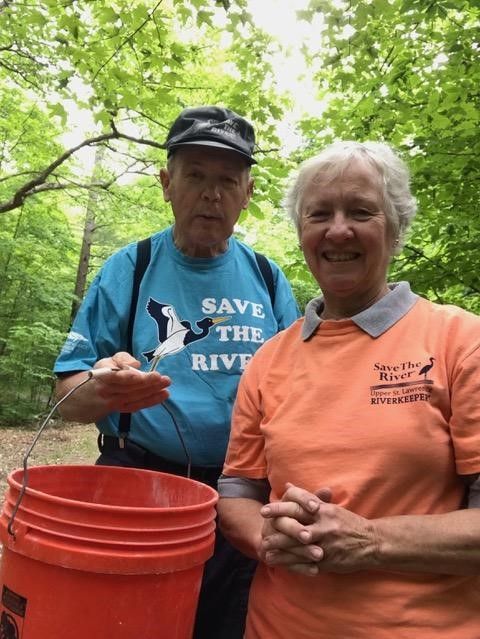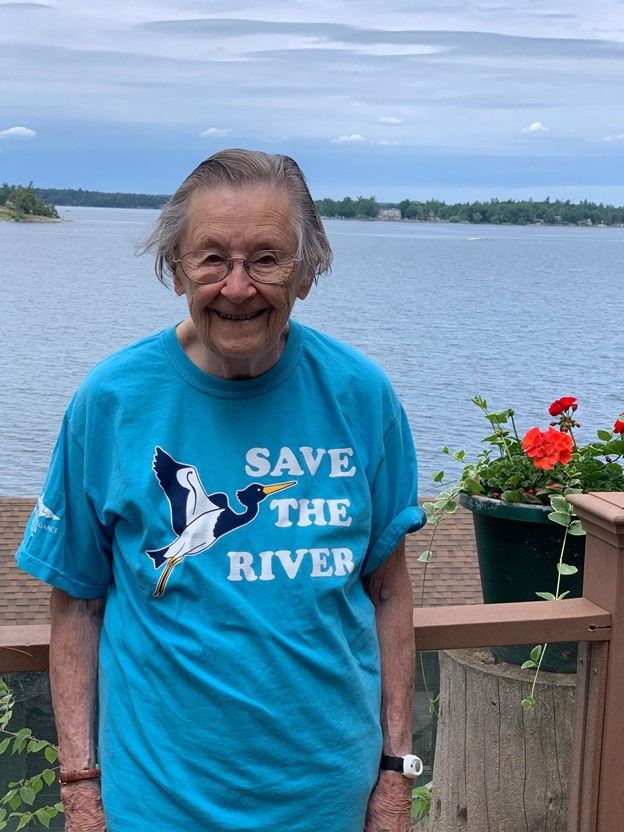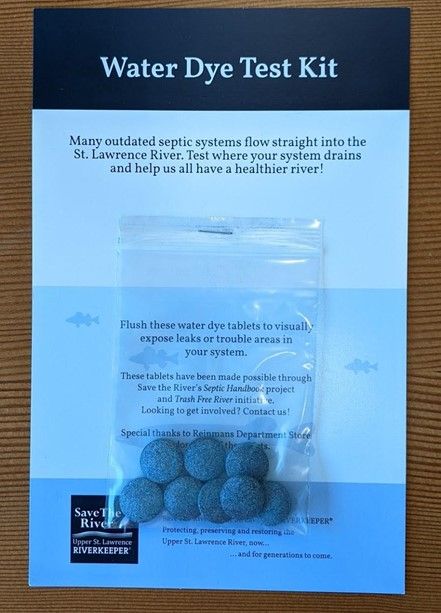Editor’s note: The title, Septic Tank Monitoring Program, doesn’t jump out at me as a “must-read first” TI Life article. Yet, if you’re one of those who remember the days when the “Save the River” organization was being rejuvenated in the 1980s, you’ll put everything else aside for the moment, get out a nice cool beverage, sit back for a read, and enjoy reliving the good old days!
You see, I was asked to be on the Board of “Save the River”, just when this important organization started to help clean up the American side of the mighty St. Lawrence River. (Canadian regulations had been in effect since the 1960s).
Board members will remember that the late Hunter Grimes III was the president. Others who have passed on include Frank Cole (Murray Isle), Ken Deedy (Grindstone Island), Polly Daw, Murray Isle, and Andy McNally III (Wellesley Island). Dick Munro, Bud Ames, Rick Gregware, and I were also there. We all remember that Saturday morning when we voted, I think unanimously, that starting the Kingfisher Septic Tank Monitoring Program was not only a good thing to do, but that it was vital to the health of the River.
In those days, islanders often just ran a pipe down the garden path right into the River. Yes, there were complaints, but surely we property owners were not supposed to spend good money to fix that problem!
However, Bill and Sissy Danforth, with approval of the family, came up with a solution. Monetary gifts in memory of Sissy’s father and mother, Robert O. and Vera Beadel of Murray Island, were available. At the next board meeting Bill suggested, “If you want the $10,000, then the family says earn it.” You know what? Thanks to volunteers like Bud Ames, we did.
Susan W. Smith, Editor, TI Life, info@thousandislandslife.com
Save the River's Kingfisher Septic Tank Monitoring Program.
In the early 1980s, Save The River Upper St. Lawrence RiverkeeperⓇ (STR) began its Kingfisher Septic Tank monitoring program. Run in the field by STR Board member emeritus Bud Ames and the late Frank Cole; this program was highly successful. Here Bud explains how it worked in his own words,
” We had a lot of support from the River community and had a captain on each island from Chippewa Bay up River to Cape Vincent, talking to their neighbors. Peer pressure helped a lot and the Heron statue was the coveted award.
“You don’t have your Heron yet; what are you waiting for?” Upon completion of a successful septic tank test, homeowners were awarded a beautiful STR heron sculpture)
I am not sure of the numbers of inspections, but 350 sounds about right during my involvement. There are lots of stories and some early video showing the red dye floating into the neighbor’s water intake and swimming areas!
I smile as I was also involved with the shoal marking program to help the Canadian Thousand Islands Association. Once I had that going, Bill Danforth “promoted” me to opening everybody’s septic tank! The program was very successful, we made the “heron guy” rich, and all of the other supplies were donated by local merchants.

After we had educated the island folks and new requests came from the mainland where conditions would support conventional systems, the program faded out.
Hunter Grimes was my “go-to guy” for education and inspection on both septic and shoal marking. He was president of STR and certainly earned his place in the community.
Yes, River Rats: Hunter, Rick Gregware, Ken Deedy, and Bill, and Sissy Danforth were some of the very interesting people that I got to know and enjoy being with as part of the Kingfisher Program.”

Ann and Sherman Ward
STR Board member Ann Ward, and her husband Sherman, were one of the first families to volunteer to test their existing septic system. Because their early 1900’s Dingman’s Point cottage had an existing septic system, they assumed the dye test would be a formality towards getting their system declared fully operational and being awarded the coveted STR heron.
Ann, now an STR emerita Board member, regales many of us with her tale of how that system failed, and the dye ran right into the River - indicating a non-functioning septic system! That failure set the stage for the installation of a new and expensive septic system, and a win for the water quality of the River.

Next Steps
Since the early days of Kingfisher, there have been several editions of the STR Septic Handbook. Until now, the most recent edition was from 2004, and was filled with outdated information. After numerous years of trying to find funding for a new edition of the handbook, STR was fortunate to have River Partner Judy Sweet step up, to provide seed funding to create a digital update to our Septic Handbook.

Click here to view Save The River’s Updated Septic Handbook Online
Working with Eric Murdoch, of Onsite Engineering, STR Outreach Coordinator Lindsey Leve, and Program Manager Lauren Eggleston, we created an online version. The Handbook includes case studies illustrating how innovative engineering has overcome the challenge of installing a working septic system on our rocky islands and shorelines. Onsite’s method of solving septic systems problems can also be used in inland areas that are not readily accessible to municipal sewer hookups.
Conventional Home Septic System Tests
Septic system dye test kits are available in Clayton at Reinman’s Department Store or the STR storefront for a $20 donation, allowing homeowners to test the operation of their system.

The test kits are a very generous donation to STR and the environment from Reinmans. Engineer Murdock prefers an onsite system inspection of existing systems. However, a dye test can be a quick method to see if your system would fail the most rudimentary operating test. Murdock can be reached at 315-254-6891 or www.onsite-engineering.us.
By John Peach, Executive Director, Save the River
John Peach, Executive Director of Save The River and the Upper St. Lawrence Riverkeeper. John has been an active environmentalist since graduation from St. Lawrence University and came out of retirement in 2018 to take the helm of Save The River. John says his “grandchildren are either sixth or seventh generation River Rats, depending on what version of the family history is being told on the porch at the island late in the afternoon.”
Posted in: Volume 16, Issue 7, July 2021, Essay, History, People, News article
Please click here if you are unable to post your comment.
